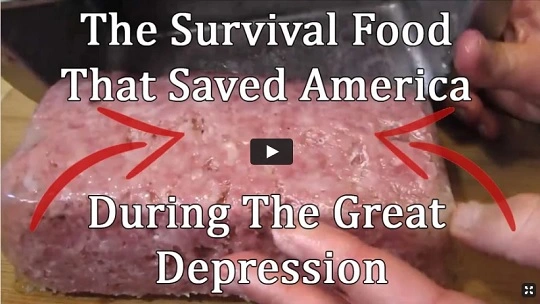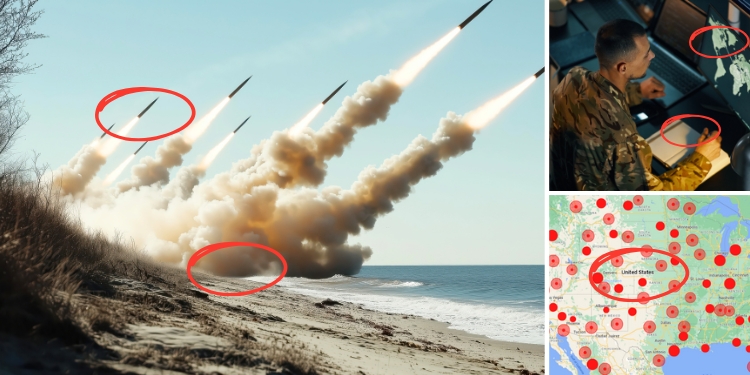The world is an uncertain place, and the recent pandemic drove home the vulnerabilities many have. Finding creative ways to relieve yourself without toilet paper is the least of your worries if the grid were to collapse, taking with it communication capabilities and stopping supply chains altogether, not just slowing them down. If the SHTF, how safe are you and your loved ones where you are? Where are the best and worst places to be?
Humans have divorced themselves so completely from the natural world that they forget the role climate and resources play in survival. However, the greatest danger you face might come from the human animal. Here are the most and least dangerous U.S. states in a SHTF scenario.
SHTF Scenarios Defined: How Likely Are They?
First, take a deep breath — it’s unlikely that a global SHTF scenario will result in an apocalyptic collapse of all modern civilization. While it’s fine to prep for such circumstances, you’ll probably experience localized disasters, such as hurricanes.
Others may be more widespread, like pandemics, but not so devastating that all is lost. Nevertheless, the following seven situations are SHTF scenarios for which you should be ready:
- Job loss: This is particularly frightening in the gig economy and as social safety nets shrink.
- Regional disasters: This includes hurricanes, earthquakes, wildfires, tornadoes and floods.
- Economic collapse: It’s either increasingly likely or unlikely, depending on which economists you follow.
- Cyberattacks: Modern reliance on technology to run the grid creates vulnerabilities.
- Pandemic: Humanity is now well-versed — but have you begun prepping for the next one?
- War: People in the U.S. have been insulated from war’s true horrors, but this is one of the most frightening SHTF scenarios. Rising divisiveness increases its likelihood.
- Critical power failure: Nearly everything people do requires electricity — what happens when there is none for days, weeks or longer?
In this short VIDEO, I will unearth A lost super-food will bulletproof you against any food shortage or famine. It’s a food that vanished with the Incas over 6 centuries ago
In the next crisis these lost skills will be more valuable than gold, food supplies and survival equipment combined. These skills have been tested and proven to work for centuries.
Here is just a small glimpse of what you’ll find in this massive 300-page sequel (in color)
- A lost super-food will bulletproof you against any food shortage or famine. It’s a food that vanished with the Incas over 6 centuries ago. This mysterious dish was just recently rediscovered by NASA who has been giving away rations of it to our brave men and women in their month-long space missions. The Incas stored it in pit holes for up to 10 years, ate it year-round, and actually used it to survive a 4 year long super-drought that wiped out their southern neighbors. So, if it managed to save the Incas centuries ago and it still works for our astronauts today, you can bet your last dollar it will keep you and your family well fed in any crisis. And the best part is that you probably already have the ingredients in your kitchen right now.
Factors to Consider in a SHTF Scenario
Your first consideration in a SHTF scenario is whether to go or stay where you are. How well you prepare helps determine your answer, as supplies reign supreme — a well-stocked storm cellar is a blessing. However, if you haven’t had a chance to become a proper squirrel, you might have to hit the road in search of what you need to survive.
When selecting your escape route, you must consider the following four factors for the journey and ultimate destination.
1. Climate
It’s vital to keep the weather in mind when traveling. When on vacation, you know you can head home if things get too uncomfortable. You don’t have that option in a SHTF scenario — leaving home means staying is more dangerous than going. You’re about to gain a whole new appreciation of unhoused individuals’ daily struggles.
Even with a vehicle to break the elements, you’ll need plenty of blankets and warmers in the winter. If you only have enough cash for one survival tool and know you’ll likely need to travel, a small propane heater can be a lifesaver. Of course, if you’re trekking through the Arizona desert in July, you have the opposite problem — water will become your most pressing need. You’ll need at least a gallon per day, and that’s if you can find shade and travel at night.
There’s also the risk your ride will break down or you’ll encounter an obstacle you can’t bypass, like a severely flooded roadway. Dress in layers and have a well-stocked bugout backpack ready if you must travel by foot.
2. Availability of Resources
Modern humans head to grocery stores when they need food. However, you probably can’t get there in a SHTF scenario — and attempting it could be dangerous if looting runs rampant. You’re in for an unpleasant awakening if you’ve never experienced genuine hunger.
Fortunately, you can forage even in urban areas. However, it’s safer in the wilds since there’s less risk of pesticides and chemicals. If you don’t have a dime to put toward prepping, at least learn what local plants you can eat in a pinch. You can also hunt to meet your daily caloric needs.
3. Natural Threats
Weather and hunger pose your greatest natural threats. Still, it helps to study the terrain along your escape route. For example, what critters might you encounter if you head to the wilds?
4. Human-made Threats
Your biggest threats in a SHTF scenario may be your fellow humans. Desperation drives people to behavioral extremes, and even the most law-abiding soul will steal a loaf of bread to assuage starvation without caring who else they deprive.
The threats amplify if you’re female or disabled — it’s an unfortunate reality. Another way to prepare if you have no money is to learn how to defend yourself. Although it’s best to attend live training and run through drills with a qualified instructor, there are plenty of free channels on YouTube with techniques you can practice with a partner. If you’re comfortable using a weapon, train with it regularly to make its use intuitive in a pinch.
The Most Dangerous U.S. States in a SHTF Scenario
You may not have had the time, money or resources to stock your home for survival. Perhaps you’re planning on relocating with potential SHTF scenarios in mind. What are the best and worst places to be? Here are the most dangerous U.S. states to be in during a disaster.
1. Major Metro Areas
The first spot on this list isn’t a specific state — it’s more regional than that. Regardless of your state, major metro areas are your worst bets in a SHTF scenario. Consider this: In the past 50 years alone, more Americans have died from gunfire than in all the U.S. wars combined. It’s not an exaggeration to say other humans may pose your biggest survival threat.
There’s also safety in numbers with those you can trust. If you reside in the city, your best prepping bet may be to organize your core posse, coordinating where you will all meet if evacuation becomes necessary.
Stocking your home for supplies is still valuable — it will help you survive SHTF scenarios like job loss, pandemics and regional disasters of limited scope where cleanup efforts take weeks. However, the sheer hordes of people in cities assure there will be plenty who don’t take such measures and will seek what you have if circumstances become dire enough. Prepare to stay, but plan to go.
2. Florida
Florida sees more than its fair share of natural disasters, so it deserves the No. 1 spot on this list outside urban jungles.
3. New York
Parts of New York are quite rural — and gorgeous. The problem is the severe weather extremes in such areas. Sections of the state are tucked between the Great Lakes and Atlantic seaboard, which are among the snowiest regions in the U.S. Even the hardiest survivalist struggles in a blinding blizzard.
3. California
What makes California so dangerous is its population size. It’s the nation’s most populous state, with an economy larger than many small countries. An economic collapse here could lead to severe repercussions, and while there are plenty of helpful folks, there are also more hell-bent on causing chaos and harm.
4. Texas
You might want a firearm for self-defense, but not every user is responsible or humane. Texas has more mass shootings than any other state, and the U.S. leads the world in these events. There are plenty of open spaces, but is it worth the risk? Furthermore, in 2018, Texas had the most motor vehicle fatalities, followed closely by California. You could find your escape route hopelessly deadlocked.
The Least Dangerous States
Where should you go to reduce your risk and increase your survival chances? Here are the four least dangerous states in the U.S. in a SHTF scenario.
1. New Mexico
Two factors make New Mexico the ideal place to be in a SHTF scenario: climate and population. Plenty of wide-open land with no one on it gives you ample areas to boondock until some semblance of normalcy returns. Although the northern part of the state sees extreme cold, driving south for a few hours puts you squarely in the sunshine.
2. Arizona
Arizona is more populous than New Mexico but still offers plenty of wide, open spaces. You’ll also find some of the best boondock camping anywhere if you must flee the Phoenix or Tucson metro areas. You’ll enjoy the perfect climate, as you’re always within a few hours’ drive of comfort.
3. Montana
Extreme cold poses a threat here, but you’ll find plenty of open lands that teem with natural resources. Hunters can survive quite nicely.
4. Utah
The deserts of Utah don’t see as much snow as the mountains. Temperature extremes aren’t too severe in some regions, and abundant campsites and natural resources exist.
Most and Least Dangerous States When SHTF
Although you’re unlikely to experience a SHTF scenario, it pays to prepare. What are the best and worst states to live in during a survival situation?
Forewarned is forearmed. Consider these tips if you’re seeking to relocate or are strategizing what to do if the SHTF.
I highly recommend this book: The Home Doctor – Practical Medicine for Every Household – is a 304 page doctor written and approved guide on how to manage most health situations when help is not on the way.
If you want to see what happens when things go south, all you have to do is look at Venezuela: no electricity, no running water, no law, no antibiotics, no painkillers, no anesthetics, no insulin or other important things.
But if you want to find out how you can still manage in a situation like this, you must also look to Venezuela and learn the ingenious ways they developed to cope.
This book is a unique guide for the layman that you can use when help is not on the way or to manage common ailments that don’t require seeing a doctor.
Let me show you just some of the things you’ll find inside the Home Doctor:





No comments:
Post a Comment